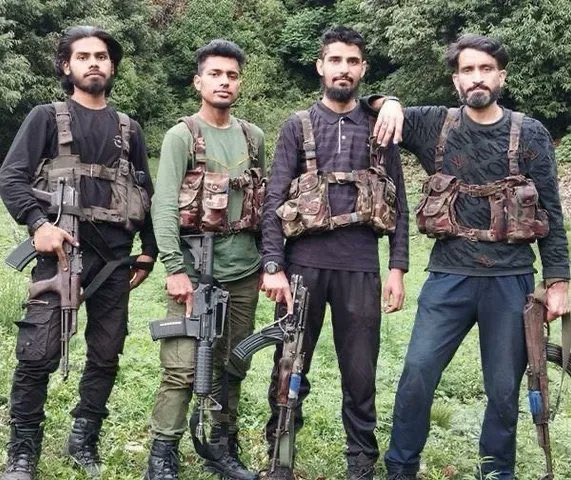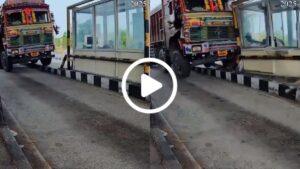Pahalgam Terror Attack Suspects Identified: Photo Released, Mastermind Named as Saifullah Kasuri

Pahalgam, Kashmir – In one of the deadliest terrorist attacks to hit Kashmir in recent years, 26 tourists were brutally killed and several others injured when militants opened fire at the popular Baisaran meadow in Pahalgam. Security agencies have now identified the suspects involved and released sketches and a photo of the attackers.

The attack, which occurred at 1:30 pm on Tuesday, was carried out by heavily armed terrorists believed to be members of The Resistance Front (TRF), an offshoot of the banned Lashkar-e-Taiba (LeT). Intelligence sources have named Saifullah Kasuri, also known as Khalid, a top LeT commander, as the mastermind behind the attack.
Three key suspects — Asif Shaikh, Suleman Shah, and Abu Talha — have been identified. They reportedly used code names Moosa, Yunus, and Asif to mask their identities. Officials said the trio had a record of past terror activities in Poonch and were known LeT operatives. Eyewitnesses noted that some of the attackers spoke Pashto, confirming suspicions of Pakistani involvement. Two local terrorists, believed to be Adil from Bijbhera and Asif from Tral, were also part of the group.

Attack Details
The terrorists, dressed in Indian Army fatigues and camouflage gear, emerged from the dense pine forest surrounding the valley and opened fire using AK-47 rifles. Survivors recounted chilling details: the assailants demanded to know their religion and asked them to recite Islamic verses before shooting.
Security agencies said the terrorists came well-prepared, carrying body cams, helmet-mounted cameras, dry fruits, and medicines. They reportedly conducted reconnaissance of the area with help from local informants.
Preliminary forensic analysis suggests the attackers used military-grade weapons and advanced communication tools, hinting at external logistical support. Intelligence agencies traced digital footprints to safe houses in Muzaffarabad and Karachi, confirming strong cross-border terror links.
Security Response
A large-scale anti-terror operation has been launched, with aerial surveillance and ground forces actively searching the forested area around Pahalgam. The Indian Army’s Chinar Corps has confirmed that the hunt is ongoing and that “all efforts are focused on bringing the attackers to justice.”
Over 1500 people have been taken into custody from the area for questioning.
Union Home Minister Amit Shah, who visited the site, stated: “This attack was not just on tourists but on Kashmir’s peace and progress. The response will be decisive.”
Security experts believe the level of planning and use of interchangeable identities points to the involvement of trained foreign handlers rather than local amateurs.
The released sketches, based on survivor input, depict young, bearded men. One grainy photograph of a man running with an AK-47, believed to match the attackers’ description, has also surfaced but is still being verified.






